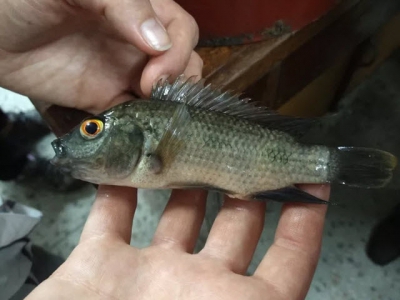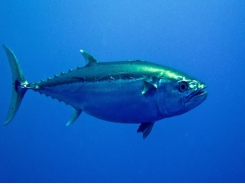Tanzania to tackle non-native tilapia strains

Tanzania is to adopt recommendations for conserving the unique genetic diversity of its tilapia stocks in order to safeguard the country’s food security.
The recommendations include Distributing only hatchery-validated juvenile fish to avoid contamination with small-bodied invasives.
Tilapia farming is rapidly growing but is putting stocks of native species – which provide many African fishermen with their livelihoods – at risk, as they are interbreeding with farmed varieties. This is affecting both wild and farmed fish, and has been a growing cause for concern.
The recommendations, which were delivered to Tanzania’s Ministry of Livestock and Fisheries, are based on the findings of research led by Prof George Turner at Bangor University, in collaboration with colleagues at Bristol University, the Earlham Institute at Norwich and at the Tanzania Fisheries Research Institute (Tafiri), funded by the Royal Society, the Leverhulme Trust, the Biotechnology and Biological Sciences Research Council (BBSRC) and the Natural Environment Research Council (NERC).

Nuermous species of tilapia are farmed in Africa
The next phase of the project, funded by the JRS Biodiversity Foundation, will expand the programme to Kenya, with the aid of a smartphone app for recording distributions, and help to identify pure populations. These can be used to restock fish farms, to help sustain food production both from wild and fish farm stocks and to maintain the wild genetic diversity that can help insure the global industry against threats such as new disease outbreaks.
Prof George Turner explained: “In a country facing rapid population growth, a reduction in fish production as a food source poses a serious threat to the sustainable aquaculture development needed to keep pace with population growth.
“Our results underline the need for aquaculture and capture fisheries policies to protect natural biodiversity and harness its valuable role in promoting food security.”

A Tanzanian tilapia pond
The paper - Improve capture fisheries using indigenous species – recommended:
- Use only large-bodied native species in wild fisheries to eliminate risk of hybridisation and disease.
- Promote sustainable aquaculture expansion.
- Distribute only hatchery-validated juvenile fish to avoid contamination with small-bodied invasives.
- Promote zoned aquaculture for smallholders, based on species indigenous to the catchment.
- Restrict use of non-native strains to large commercial farms, which have strong biosecurity.
- Make managing biodiversity a priority.
- Promote fish identification skills among fisheries, aquaculture and conservation practitioners.
- Identify and protect ark populations of each indigenous tilapia in Tanzania, to conserve genetic diversity.
Có thể bạn quan tâm
Phần mềm

Phối trộn thức ăn chăn nuôi

Pha dung dịch thủy canh

Định mức cho tôm ăn

Phối trộn phân bón NPK

Xác định tỷ lệ tôm sống

Chuyển đổi đơn vị phân bón

Xác định công suất sục khí

Chuyển đổi đơn vị tôm

Tính diện tích nhà kính

Tính thể tích ao hồ



 Adjusting carb to lipid ratios in tilapia feeds…
Adjusting carb to lipid ratios in tilapia feeds…  Farmed fish prioritised in animal welfare initiative
Farmed fish prioritised in animal welfare initiative